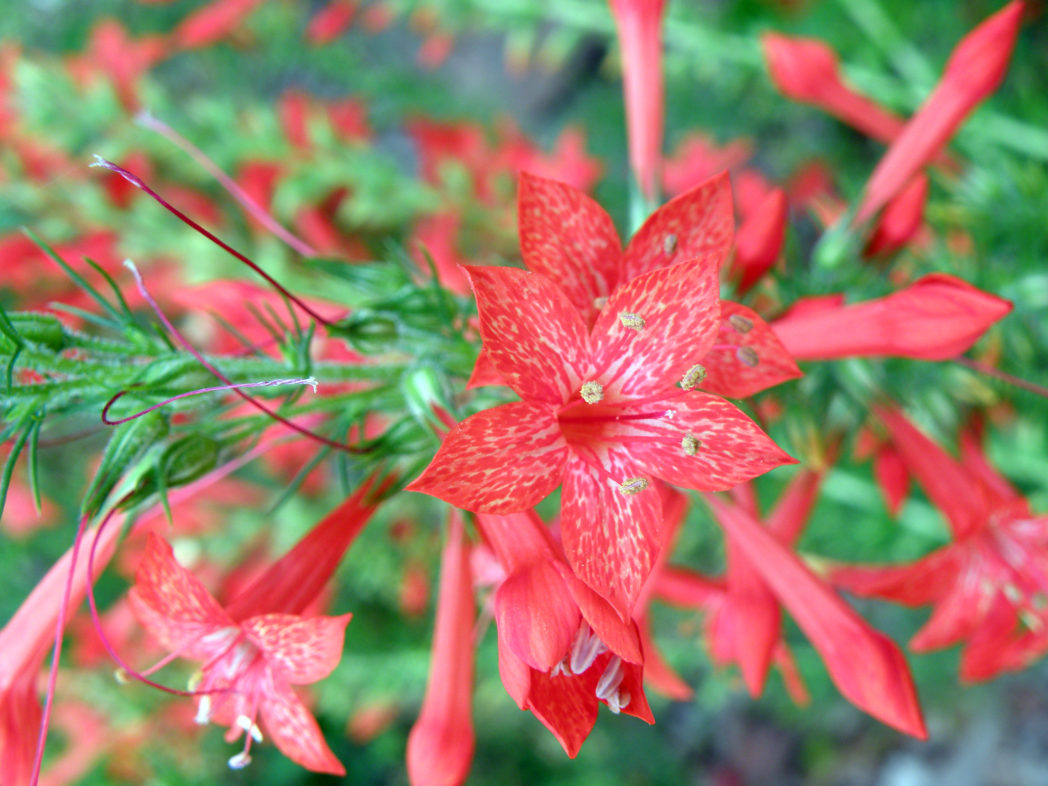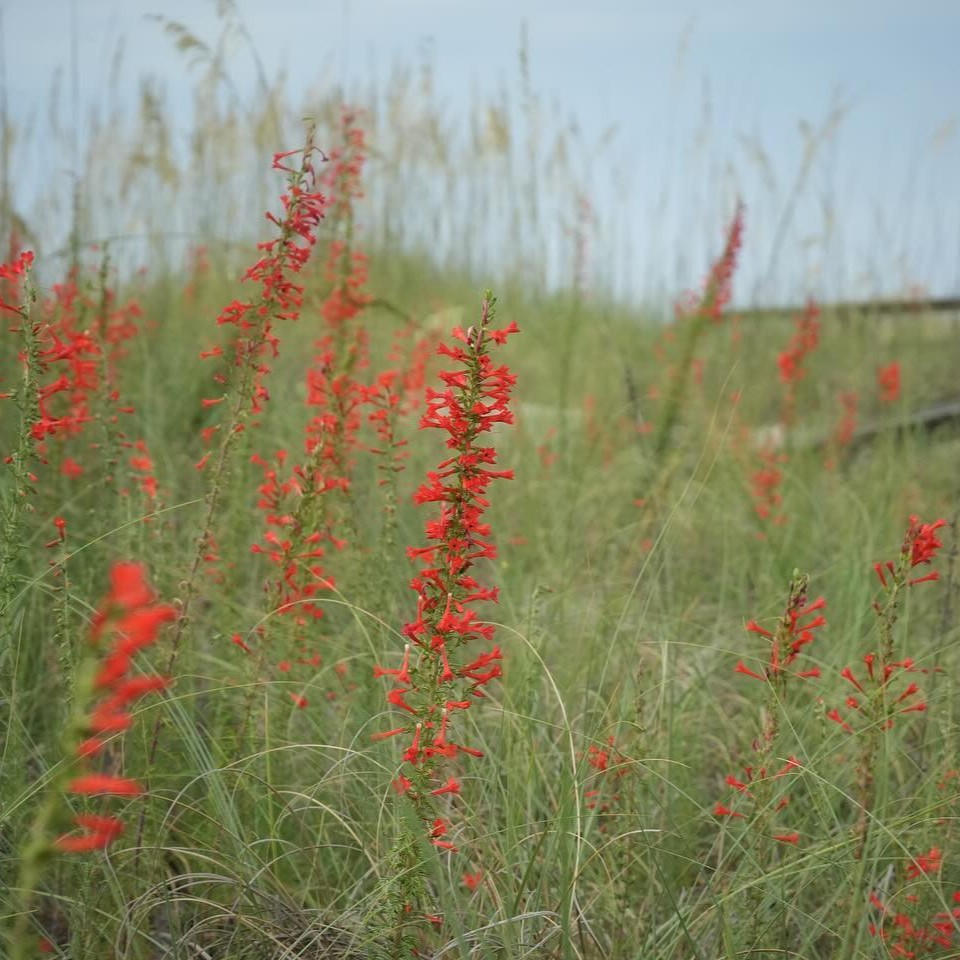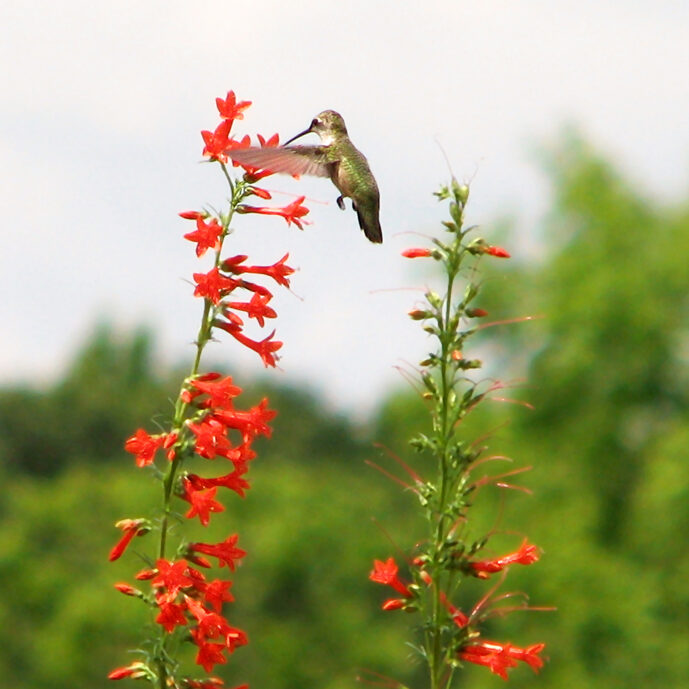Standing cypress
Pictured above: Standing cypress (Ipomopsis rubra) by Stacey Matrazzo. Click on terms for botanical definitions. View post as a PDF.
Standing cypress (Ipomopsis rubra) is a brilliant, biennial herbaceous wildflower. Its inflorescence is a dense, elongated, terminal spike of long, bright red, tubular flowers. Calyces and corollas are each five-lobed. Its pinnate leaves are fern- or needle-like, sessile and alternately arranged. Stems are pubescent. Seeds are born in a capsule. Standing cypress begins as a basal rosette of fern-like foliage. In its second year, it will send up an erect, leafy stem that looks a bit like dog fennel until it blooms into a spectacular spray of scarlet.
Standing cypress blooms summer through fall and occurs naturally in sandhills, coastal strands, beach dunes and ruderal areas. It is very attractive to hummingbirds and butterflies as well as other pollinators.
Contrary to what its common name might suggest, Standing cypress is not related in any way to the cypress tree (Taxodium sp.) It might, however, refer to the plant’s leaves, which vaguely resemble cypress needles. Other common names are Spanish larkspur, Texas plume and skyrocket.
Family: Polemoniaceae (Phlox family)
Native range: North and central peninsula; Escambia, Jackson and Leon Counties
To see where natural populations of Standing cypress have been vouchered, visit florida.plantatlas.usf.edu.
Lifespan: Biennial
Soil: Well-drained, sandy soils
Exposure: Full sun to minimal shade
Growth habit: 3’+ tall
Propagation: Seeds
Garden tips: Standing cypress is a great landscape addition if you want to attract butterflies and hummingbirds. It is very sensitive, however, and is susceptible to root rot if its soil doesn’t drain to its needs. It is a moderate self-seeder.
Standing cypress seeds are available through the Florida Wildflower Growers Cooperative. Plants are often available at nurseries that specialize in native plants. Visit PlantRealFlorida.org to find a native nursery on your area.
Learn more about Standing cypress from the Florida Native Plant Society and the Institute for Regional Conservation.



